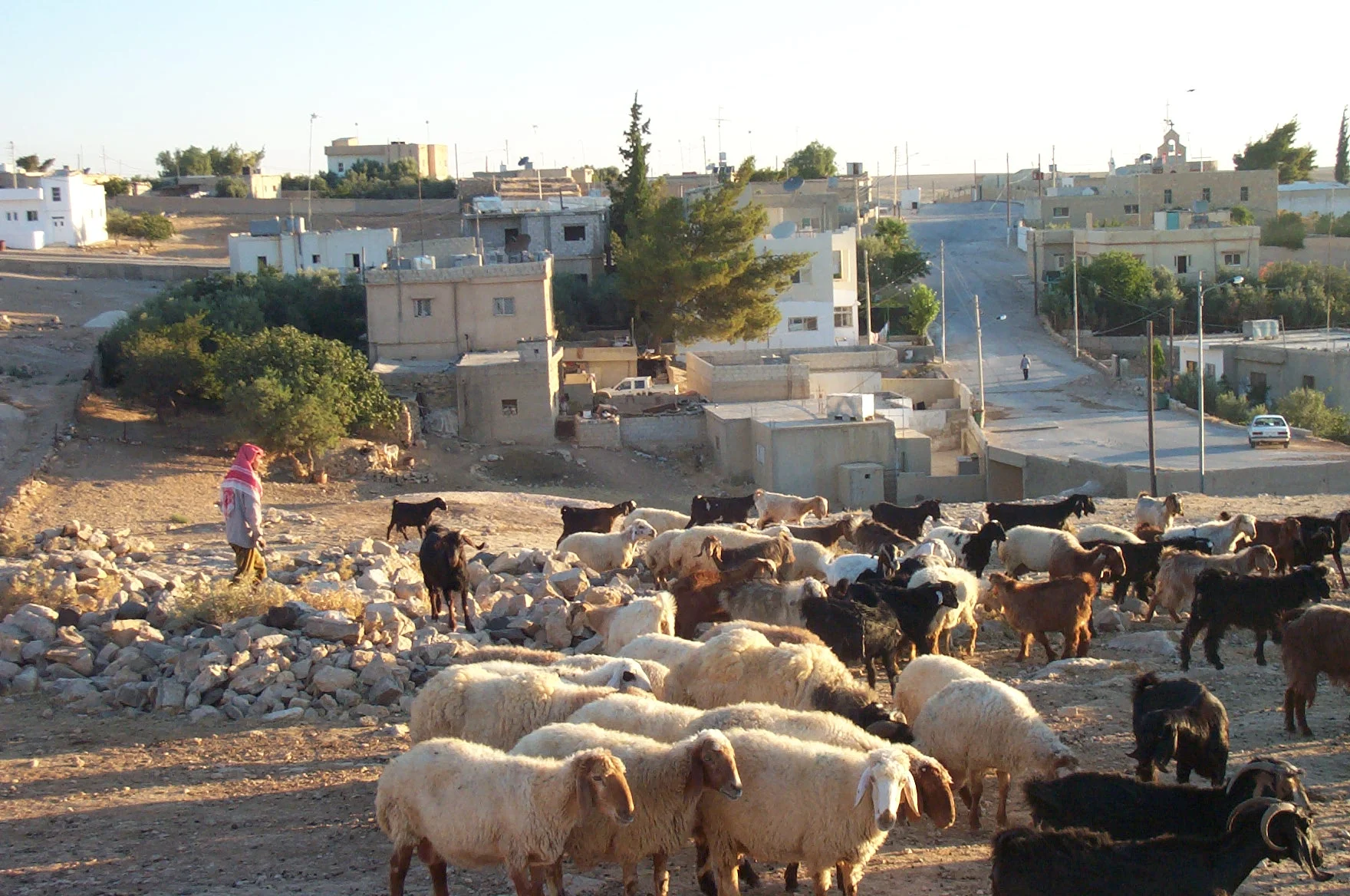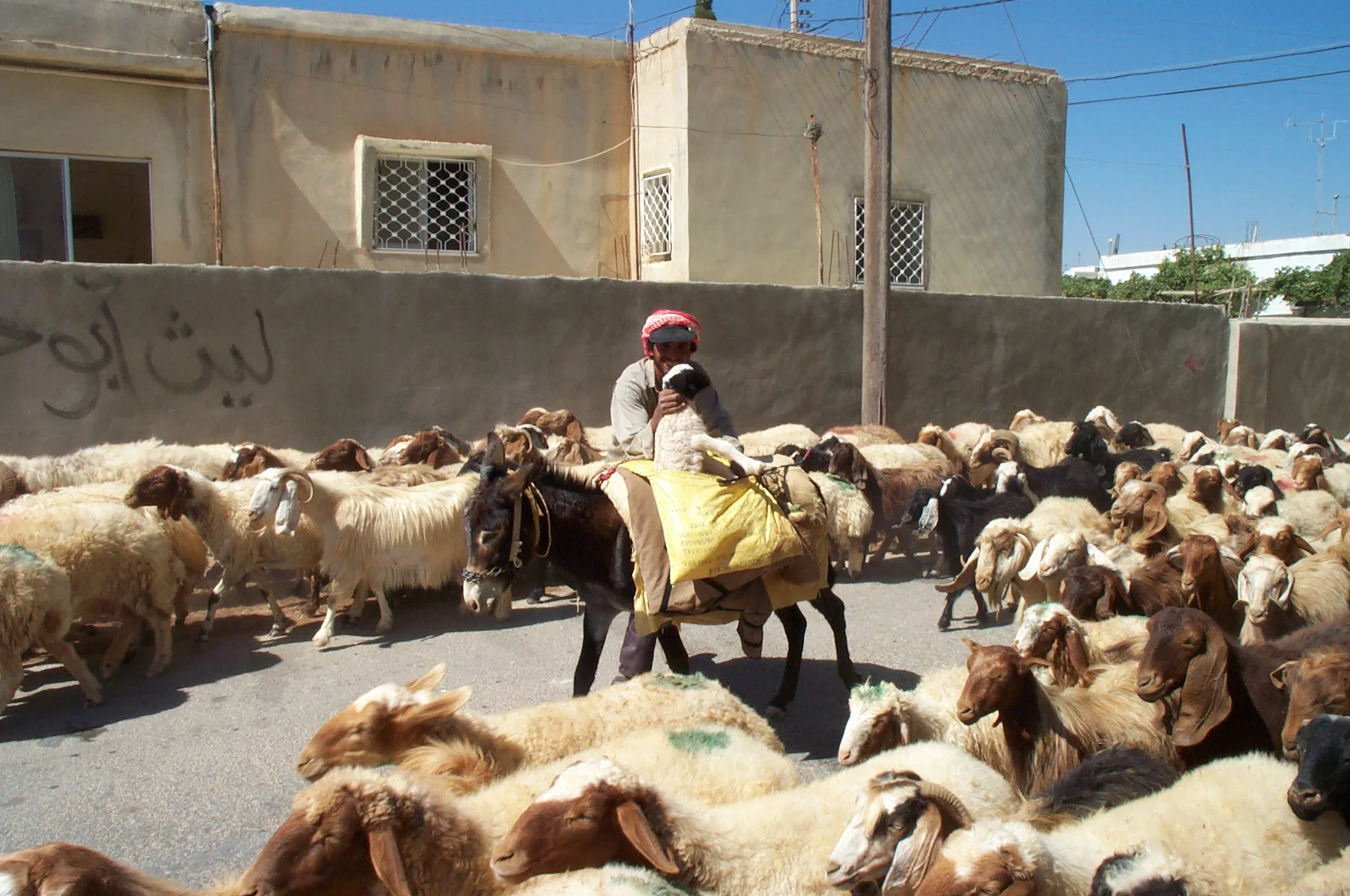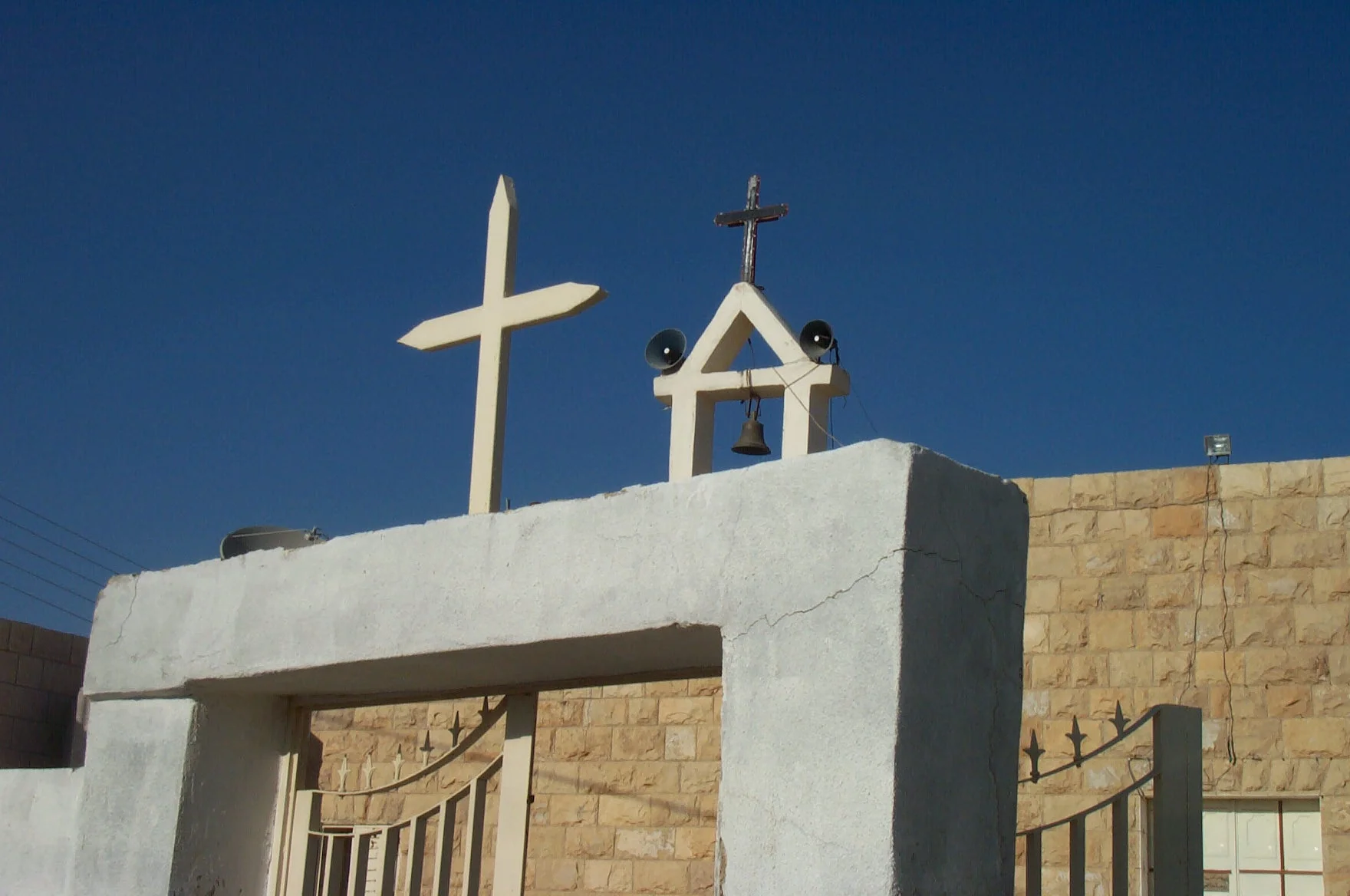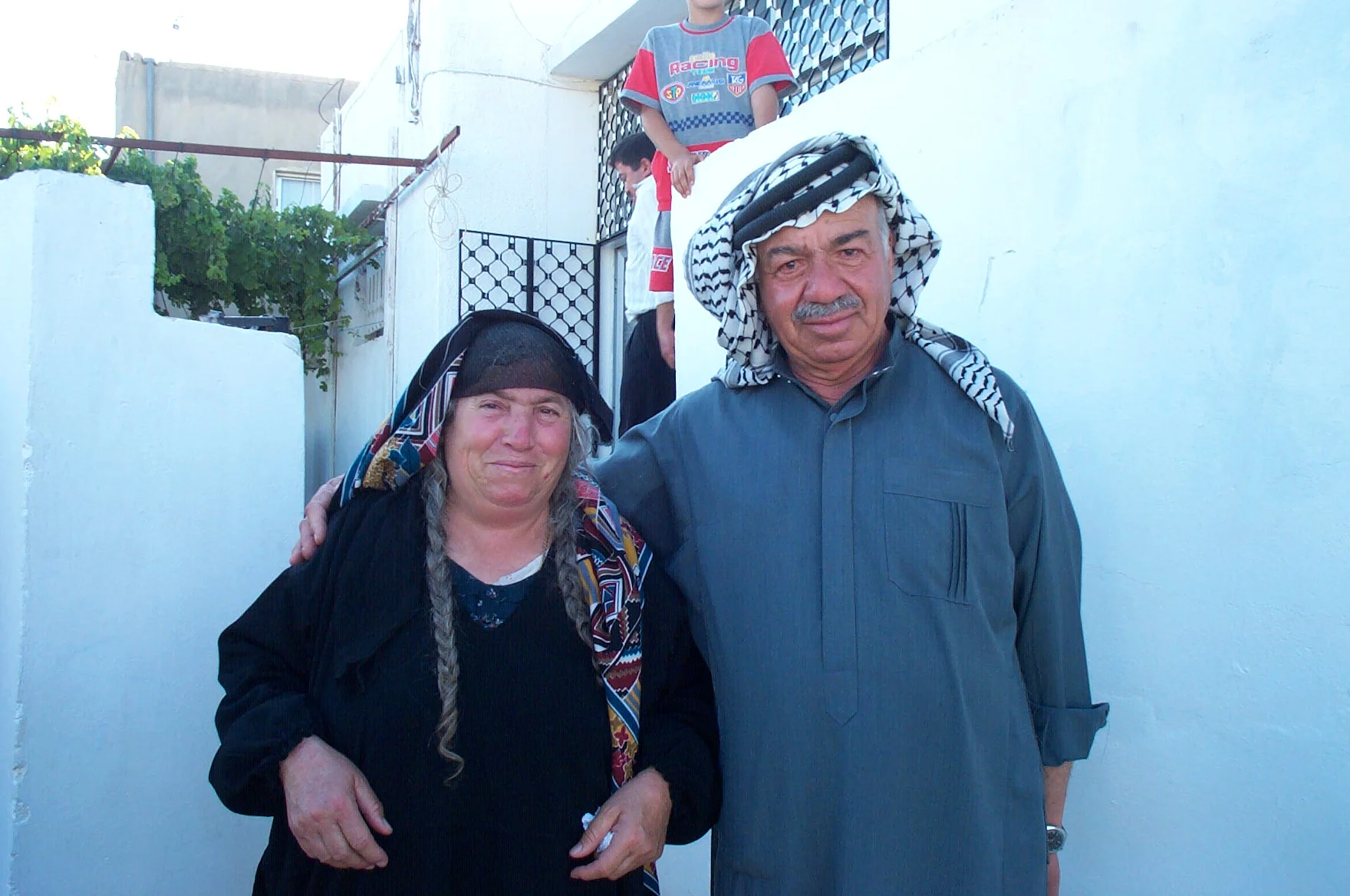Simakiyya: A Christian Village on the Edge of the Desert of Jordan
Dr. Murl Dirksen
Bedouin shepherd collecting village herd
Located on a small plateau of Karak in central Jordan on the edge of the Sahara Desert, the Christian village of Simakiyya is representative of a traditional shepherding and agricultural way of life that has existed for thousands of years but also exhibits characteristics of the rapid modernization of rural areas throughout the Middle East.
The area has a long history of human occupation. Numerous archaeological sites in and around Simakiyya date back to the Early Bronze Age, 3300 -2000 BC The most obvious of these historical examples is the old Ottoman village of Simakiyya with a history of just over a hundred years ago but today is almost deserted. Proximity to the harsh environment of the surrounding desert and lack of water has contributed enormously to the value of this small area of arable land where the Bedouin, the nomadic people of the desert, spend their spring and summer months in interaction with the settled people of the Karak Plateau.
Village shepherd returns home with new born lamb
The gentle Christian people of Simakiyya began the transition from a totally nomadic way of life as Bedouin to a settled village life at the turn of the 20th century. Many of the traditional customs are still maintained. Numerous village families own herds of sheep and goats, and shepherding is an inherent part of the mentality of the people. In addition, settling on the Karak Plateau has afforded the Christian villagers the opportunity to engage in rain fed dry land farming and many Simakiyyans are also involved in farming and related activities.
Crosses on front of Melkite Catholic Church
Throughout the Middle East, the basic identity of the person is based on their ascribed relationships in a family, clan and tribe and this is no less so in Simakiyya. The Hijazin and the `Akasha, two Christian nomadic tribes that herded the sheep on the Karak Plateau, were encouraged by local priests in the late 1800's to settle since village life would make it easier to provide for an orderly parish life. Today, members of the two tribes reside on tribal land and their church affiliation is directly tied to tribal membership. The two Christian churches are central to the political and social activities of Simakiyya.
Village couple
The area has a long history of human occupation. Numerous archaeological sites in and around Simakiyya date back to the Early Bronze Age, 3300 -2000 BC The most obvious of theSome of the traditional ways are disappearing and villagers are bemoaning this fact. For example, the household handicraft of rug making is no longer practiced. The skill of hand woven rug making is known by the older women but is no longer being done because of the lack of a market. Some want to see this skill revitalized and a proposal is under way to set up a center where older women can teach younger women this handicraft skill. In the families with sheep and goats, some women process the milk in the traditional way making butter, cheese and yogurt and continue the traditional methods of food preparation, particularly milk processing and bread baking. Other villagers take the milk from their sheep and goats to commercial establishments set up to process huge quantities of milk.se historical examples is the old Ottoman village of Simakiyya with a history of just over a hundred years ago but today is almost deserted. Proximity to the harsh environment of the surrounding desert and lack of water has contributed enormously to the value of this small area of arable land where the Bedouin, the nomadic people of the desert, spend their spring and summer months in interaction with the settled people of the Karak Plateau.
The following is a case study of the Christian people of Simakiyya who generously opened their homes and personal lives and allowed us to intrude into their private spaces with notebooks, tape recorders, digital cameras, video cameras and unending questions. We hope that this study will help the world better understand the Christian tribal people of Jordan, their courageous struggle as a minority, and their effort to maintain their way of life while adapting to the modern world. We also desire to develop a similar project in a neighboring Muslim village in order to give a comparative view of the changes on the plateau and equally understand their hardships and life struggles.



